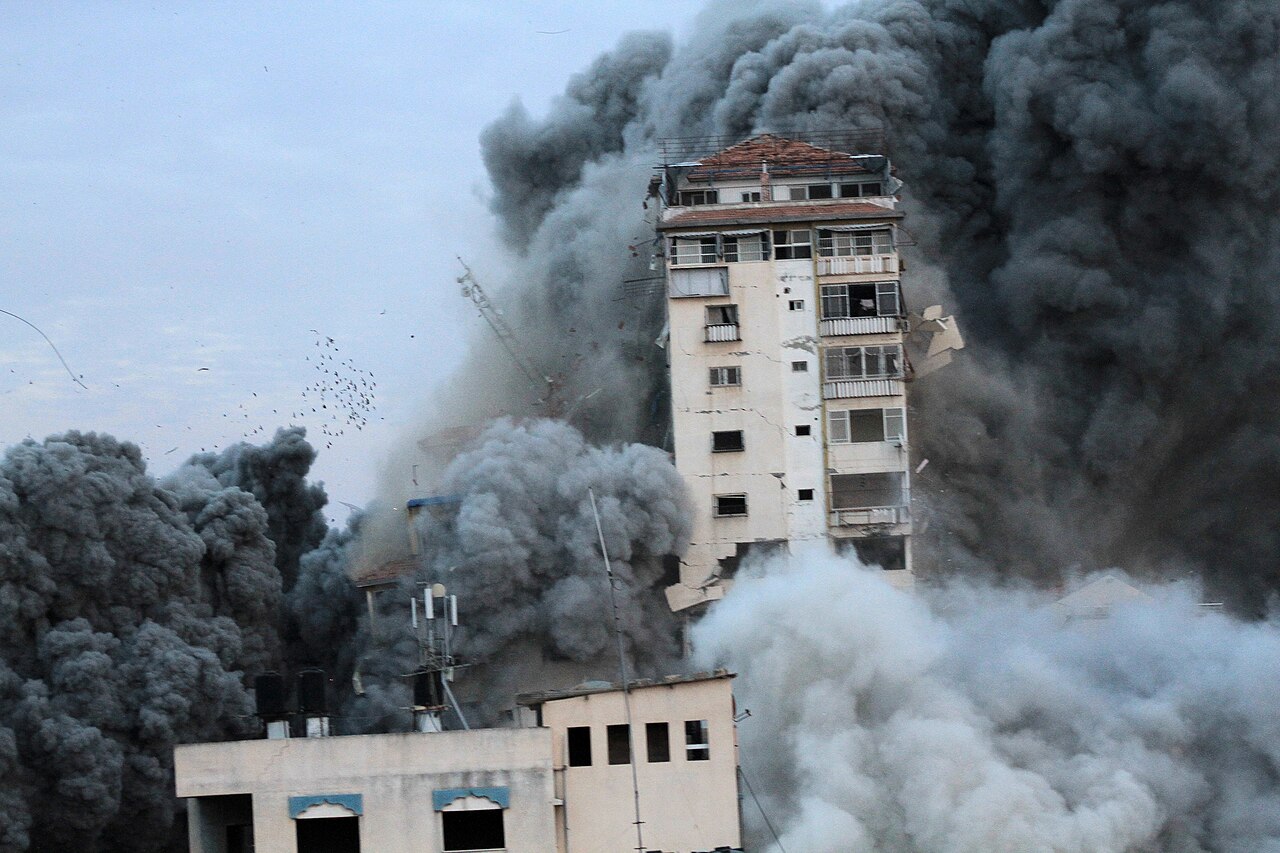
As a Christian social ethicist, I reflect on the issues of war and peace with an assumption that Christians live in two conflicted understandings of time: linear and palimpsestic. These two perspectives have shaped Christian discourse on God, Jesus, war, peace, and apocalypse. The linear frame sees time as one-directional from the past to the future. In contrast, M. Jacqui Alexander conceptualizes time as “neither vertically accumulated nor horizontally teleological.” Alexander frames time as a palimpsest, “a parchment that has been inscribed two or three times, the previous text having been imperfectly erased and, therefore, remaining still partly visible” (190). A palimpsest brings the past into the present and the future and casts the future into the present and the past. It leads one to scrutinize what has been erased, what has been rewritten on the text, and what traces will remain. War stories and memories move between these two frames of time, evoking and triggering the memories and traumas of different wars. It is based on this conceptualization of temporality that I approach the Israeli war on Gaza, searching for peace in the remains of war ruins. More specifically, in a world where no one knows peace free from war, is it possible to imagine a theology of peace that can sustain Christians of conscience in a firm belief in the God of peace, bring global citizens together in resistance to militarized violence, and renew our creative and strategic skills in building peace?
Memories of War across Time and Space: Gaza and Korea
The escalated war on Gaza is not an isolated, unique event. Instead, as the war has been revealed in the media since October 7, 2023, global spectators have processed it through their (collective) memories and experiences of other wars. In my case, Gaza evokes memories of the Korean War, known as the forgotten war in the United States. The full-blown Korean War broke out in June 1950 and ended in July 1953 when the United States/United Nations and the China-North Korea alliance reached an armistice agreement. The war killed as many as four million people, mostly Korean civilians. Although the Demilitarized Zone and the U.S. military’s presence in South Korea are constant reminders of the ongoing Korean War, I had no direct physical experience of the war. Nonetheless, like many Koreans and Korean Americans, I have emotionally and psychologically experienced the effects of the war because of transgenerational memories and trauma that have been passed on to me.
In the summer of 2012, I visited Nablus in the West Bank of Palestine as part of a political tour group organized by the Green Olive Collective. The tour exposed the participants to realities in the West Bank and the Negev desert. When my group walked through the ruins from the Second Intifada (2000–2005), memories of the Korean War were relayed: bombed buildings, half-fallen walls with bullet holes, and broken armored vehicles. The ruins were confined to a tiny area close to the city center. Although the day tour allowed me to explore the beauty of Palestinian art and culture, after facing the war ruins left by the Israeli military, I realized that I had walked through one of the world’s most militarized zones, if not a war zone. Palestinians have made their lives on the remains of war ruins and continue to constantly be exposed to one militarized episode of violence after another.

Grace Cho insightfully argues that “the trauma of militarized violence can traverse boundaries of time and space so that the effects of military bombing … can at once be embodied in two seemingly distinct geographical and historical locations,” such as Palestine in 2024 and Korea in 1950 (57–58). Cho’s argument allows me to see the war on Gaza as the reminiscence of the Korean War, or the Korean War as an evocation of a future Gaza. By studying a “one-hundred-year war” against Palestinians, I could investigate the Korean War and its necropolitical logic (politics of death) more critically. As Achille Mbembe argues, war is “a means of achieving sovereignty as much as a way of exercising (its) right to kill” (66). The Korean War allowed the Allied Forces, mainly the U.S. Armed Forces, to exercise their unregulated killing of Korean civilians, regardless of their political affiliations. Subsequently, the war structured a post-war Korean society and caged it in a permanent state of warfare.
“Brutality” may not justly describe the intense level of atrocities done to the collective body of Koreans. Like Palestinians in Gaza, Koreans experienced “fire and fury” seventy-four years ago. U.S. airstrikes and napalm bombings wreaked havoc on major cities in North Korea, such as Pyongyang, Sinuiju, Wonsan, and Hamheung. These cities had no standing buildings left at the end of the Korean War. The secret U.S. military files declassified in the early 2000s suggest that the U.S. armed forces knowingly killed civilians, including women, children, and refugees, even in the southern Korean peninsula. They justified these killings with the logic of preventing possible insurgencies by communists disguised among refugees or hiding in villages (aka “human shields”). The U.S. military considered all Koreans as (potential) communist enemies to be eliminated. A similar logic is manifested in Gaza. Suppose that mutilated, killed, and burnt bodies and towns during the Korean War illustrated the U.S.-led fear and hatred of dehumanized communists while the collective Korean body was equated with communism. In that case, Palestinians’ debilitated bodies and devastated Gaza City, Khan Yunis, and Rafat are equated with religiously motivated terrorists by the Israeli government and its global allies.
War Logic
The present moment of the war on Gaza is accessible through traces of the Korean War because of not only the intensity of militarized violence but also the imperial logic behind the war and sovereignty’s impromptu response to armed violence. Indeed, like the U.S. Air Forces in the Korean War, the Israeli airstrikes and saturated bombing on every part of Gaza debilitated Palestinian civilians and their schools, homes, houses of worship, and hospitals. As Sharon Welch argues, “Cruelty can be intoxicating,” and, therefore, “the use of violence, even for noble ends, can spark excessive violence” (38). Images from Gaza since October 7, 2023, resonate with the shock doctrine used in many wars, such as those in Korea, Vietnam, Afghanistan, the Pacific Gulf, Iraq, and more.
The genocidal aspects of the said wars are linked with colonial history in those regions and, more specifically, racial, cultural, and religious prejudices against formerly colonized people of color or colonizers’ sense of moral superiority. According to Jodi Kim, like the war in Vietnam, the Korean War could have been seen as a newly emancipated third world country’s anticolonial nationalist conflict; instead, the United States hijacked the war to consolidate its power in Asia Pacific, interpreting the war as part of communist attacks on the free capitalist world. Subsequently, the Korean War would enable the United States to intervene in various wars in a post-colonial world based on its geopolitical interests. Similarly, Israel and the United States have portrayed Palestinians’ various violent and nonviolent endeavors to reclaim their self-governance and sovereignty as religiously motivated terrorist attacks against liberal democratic states.

The war on Gaza has effaced memories of nonviolent peacemaking, making Palestinians, Jews of conscience, and global citizens in solidarity with Palestinians irrelevant in Israeli–Palestinian relations. For this reason, I encounter the ghosts of the Korean War in Gaza. Although the war on Gaza does not identically align with the Korean War, they share the historical roots of the colonial and Cold War logic and the prioritization of U.S.-centered international security over human security. The Korean War and the Nakba erupted in the global transition from territorial colonialism to neo-colonialism. More than seven decades later, Gaza still demonstrates the tenacity of territorial colonialism; the contemporary Korean peninsula meanwhile is marred with competition and conflict augmented by neocolonial empires (i.e., U.S., Japan, China, and Russia) and sub-empires (i.e., South Korea).
A Theological Reflection on Time: Memories of War and Peace
The logic of war relies on linear thinking about time: the beginning, the middle, and the end, the latter of which creates a clean slate for a new beginning. This logic aligns with the ideology of Christian triumphalism that depicts Jesus Christ as the mighty warrior who will accomplish the ultimate victory over evil and end human history. Christian triumphalism is an apocalyptic and Manichean vision that is shared among many evangelicals who see this world as a constant battlefield. For these Christians, violence is necessary and even holy because it eradicates evil and makes possible the creation of a new world. Christian triumphalist ideology interprets the death and resurrection of Jesus as a military tactic to win over evil. Emilie Townes points out the historical infusion of Christian triumphalism in American imperial desire. If the United States were called to become a new Jerusalem, City on the Hill, its theo-political responsibility would destroy one evil after another until the final battle. Christian triumphalism has been alive for many years in U.S. domestic and foreign policies. For instance, the United States justified the Korean War as a means to defeat “godless communism,” just as U.S. military campaigns in the Middle East often invoked the name of a Christian god.
Whenever militarized violence erupts, the linear time frame recalls past episodes of violence. Yet, memories of war and only partially erased stories of massacres and genocide constantly haunt linearly remembered war stories. Within this linear frame, peace is imagined only following war, violence, and killing. As a result, peace is often defined as an absence of armed conflict (negative peace) or as attainable only through military power. In a palimpsestic time, however, peace is always alive, creating multiple meeting points for past, present, and future peace activists. God’s time is palimpsestic, just as the name of Jesus Christ is invoked at the Eucharistic table, where the living and the dead are all invited, sharing meals in solidarity to realize God’s peace and justice or paradise on earth. The peace of Christ at the Eucharist is manifested through sharing bread and wine rather than through bloody crucifixion in the hands of the Roman Empire.
Memories of war and only partially erased stories of massacres and genocide constantly haunt linearly remembered war stories. Within this linear frame, peace is imagined only following war, violence, and killing.
A palimpsestic approach traces peace as it is embodied and practiced by ordinary people who have left cracks in the imperial history of war. Palestinian Christian activists such as Jean Zaru illuminate nonviolent peacemaking as an embodied practice rather than a theory, principle, or noble idea. Zaru interweaves her multiple social identities of being an Arab, Palestinian, Quaker, and a woman with practicing nonviolence as a practical way of everyday living. Her aim is to achieve justice and peace without losing the practitioner’s integrity. Memories of Gaza are not simply about killed, mutilated, and debilitated bodies of Palestinian women, men, and children but also their persistent resistance to Israel’s militarized violence.
Different war stories should be read together critically, comparatively, and relationally. By doing that, we can interrogate the complexities of militarized violence and the banality of evil. Peace is never erased from human history but is often hidden and palimpsestic. Even if peace activism is documented, peace activists’ embodied spirituality, steadfastness, and imagination cannot be captured in written documents. This embodied peace only remains in our memories, which can be accessible only when we consciously embody it. If we can ever talk about a theology of peace in Gaza and in Korea, this theology is grounded not in the remains of the war ruins but in the palimpsest of peace.

